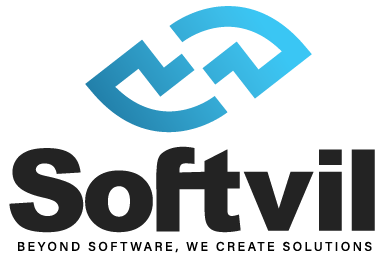Agile software development has revolutionized the way software is built and delivered, providing a flexible and collaborative approach that helps teams respond quickly to changing requirements and customer needs. But as we look ahead to the next decade, what changes can we expect to see in the world of agile development?
The past decade has seen the widespread adoption of agile development methodologies, with businesses of all sizes embracing the principles of flexibility, collaboration, and continuous improvement. But as technology continues to evolve and new challenges arise, it’s important to consider how agile development will continue to adapt to meet the changing needs of the industry. In this article, we will explore the future of agile software development, examining the potential impact of emerging technologies, the challenges and opportunities of scaling agile to large projects and organizations, and the continued evolution of agile methodologies.
- The impact of emerging technologies
- The potential for agile development to become collaborative and integrated
- The role of agile development in addressing societal challenges
- The challenges and opportunities of scaling agile development to large, complex projects and organizations
- The continued evolution of agile methodologies
- Wrapping it up
The impact of emerging technologies
Emerging technologies such as artificial intelligence (AI), machine learning (ML), and the Internet of Things (IoT) have the potential to significantly impact agile software development in the coming decade. AI and ML are able to help automate repetitive tasks, such as testing and debugging, freeing up time for developers to focus on more complex tasks. They can also help identify patterns and trends in large datasets, providing valuable insights that can inform the development process.
The IoT, with its vast network of interconnected devices, can create new opportunities for agile development. For example, by using sensors and data analytics, developers can gain real-time insights into how users interact with software and hardware, allowing them to quickly make adjustments and improvements. However, these technologies also bring new challenges. For example, integrating these emerging technologies into existing agile processes can be complex, requiring new skills and approaches. Additionally, there may be ethical considerations when using AI and ML, such as bias and privacy concerns.
Overall, the impact of emerging technologies on agile development will depend on how effective teams can integrate and adapt to these new tools and approaches. Those who are able to do so successfully may gain a significant competitive advantage in the coming years.
The potential for agile development to become collaborative and integrated
Agile software development has always emphasized the importance of collaboration between development teams and stakeholders, such as product owners and business analysts. However, in the next decade, we can expect to see even more collaboration between development teams and other parts of the organization, such as marketing and customer service.
By integrating marketing and customer service into the agile development process, teams can gain a better understanding of customer needs and preferences, leading to better products and customer experiences. For example, marketing teams can provide valuable insights into market trends and customer behavior, while customer service teams can provide feedback on product issues and user experience. Additionally, integrating these teams can help break down silos and improve communication across the organization, leading to a more holistic approach to product development. This can result in faster time-to-market and better alignment with business goals.
However, integrating marketing and customer service into the agile development process may also require new skills and approaches. For example, developers may need to become more comfortable with data analytics and customer research, while marketers and customer service professionals may need to become more familiar with agile development methodologies. Overall, the potential for agile development to become more collaborative and integrated with other parts of the organization presents exciting opportunities for teams to create better products and customer experiences in the coming years.
The role of agile development in addressing societal challenges
Agile software development has traditionally focused on delivering value to customers through flexible and iterative development processes. However, in the next decade, we can expect to see a greater emphasis on the role of agile development in addressing societal challenges, such as sustainability and social responsibility. Agile development can play a role in addressing sustainability challenges by promoting the use of green technologies and reducing waste in the development process. For example, agile development teams can prioritize the use of open-source software and cloud-based infrastructure, which can help reduce the carbon footprint of software development.
Similarly, agile development can help promote social responsibility by focusing on accessibility and inclusivity in the development process. By involving diverse stakeholders in the development process and incorporating feedback from underrepresented groups, agile development teams can create products that better serve the needs of all users. However, addressing societal challenges through agile development will require a broader perspective on value creation beyond just customer satisfaction. It will require a greater focus on the social and environmental impact of software development and a commitment to creating products that serve a greater good. Moreover, the role of agile development in addressing societal challenges presents an exciting opportunity for development teams to create positive change in the world and make a lasting impact on society.
The challenges and opportunities of scaling agile development to large, complex projects and organizations
Scaling agile development to large, complex projects and organizations presents both challenges and opportunities. One of the biggest challenges is maintaining the agility and flexibility of the development process while also managing the complexity of larger projects and coordinating teams across different locations and time zones. This may require the use of specialized tools and processes, as well as a greater emphasis on communication and collaboration. However, scaling agile development also presents opportunities for greater efficiency and collaboration across different teams and departments. By breaking down silos and promoting cross-functional collaboration, organizations can create a more cohesive and agile development process that can quickly adapt to changing market conditions and customer needs. This potentially results in faster time-to-market, higher quality products, and enhanced customer satisfaction.
The continued evolution of agile methodologies
Agile methodologies have already undergone significant evolution since the introduction of the Agile Manifesto in 2001. However, in the next decade, we can expect to see the continued evolution of agile methodologies, with the emergence of new frameworks and approaches that build on the core principles of agile development. These new frameworks and approaches will likely focus on areas such as scaling agile to larger organizations, incorporating new technologies, and addressing societal challenges. For example, we may see the emergence of new frameworks for agile marketing or agile customer service, as organizations seek to integrate these functions more closely with development teams. Overall, the continued evolution of agile methodologies presents exciting opportunities for organizations to build on the successes of agile development and create new, more effective ways of delivering value to customers.
Wrapping it up
In conclusion, the next decade promises to bring significant changes and opportunities to the world of agile software development. From the impact of emerging technologies to the potential for greater collaboration with other parts of the organization, agile development will continue to evolve and adapt to new challenges and opportunities. As organizations seek to create more sustainable, socially responsible, and value-driven products, agile development will play a crucial role in helping them achieve these goals. By staying flexible, adaptive, and committed to the core principles of agile development, organizations can continue to deliver high-quality products that meet the evolving needs of their customers and stakeholders.

